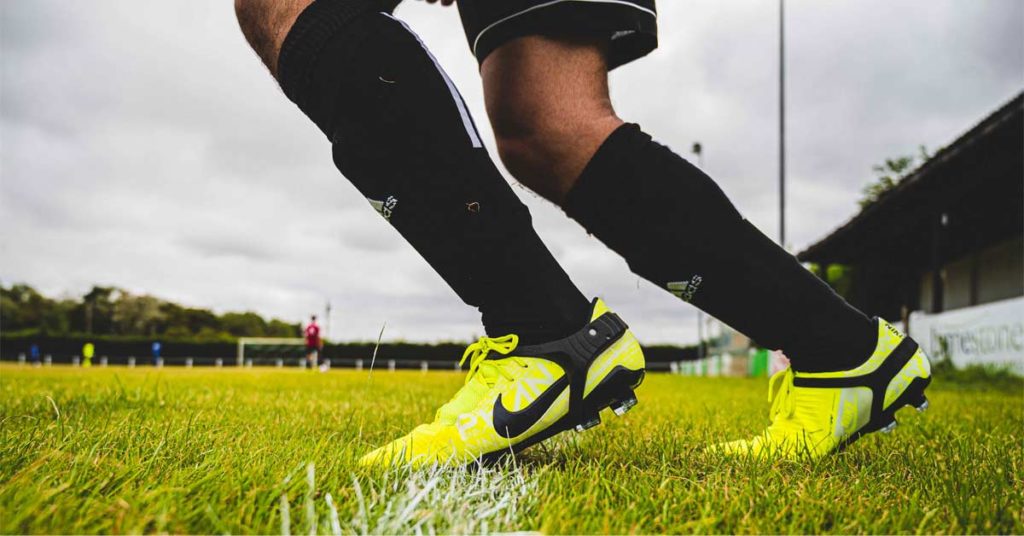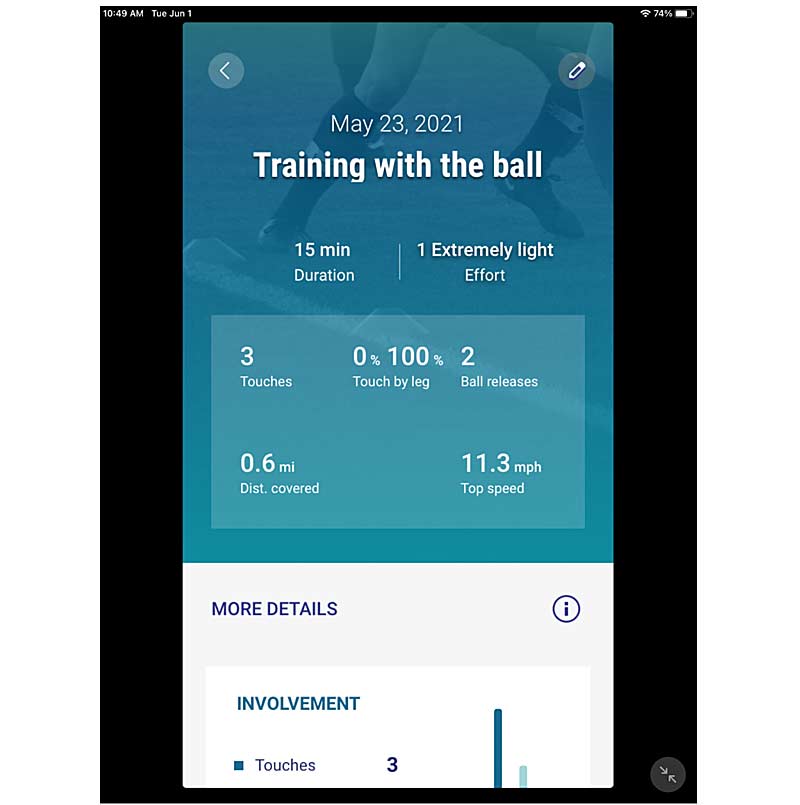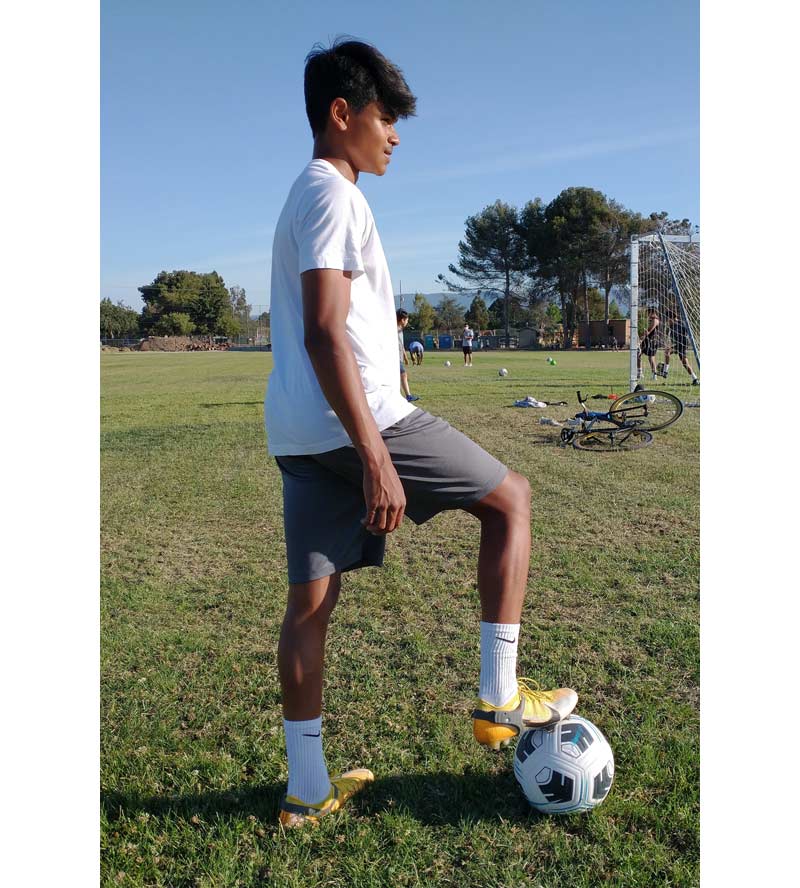
Wearable electronic devices have inundated the consumer market for over a decade, with numerous products available for the sports performance enthusiast. Millions of FitBits have been purchased since 2014, conferring metrics for heart rate, movement, and sleep quality; meanwhile, the recovery monitor WHOOP is popular within the CrossFit community to guide training readiness via heart rate variability and sleep analysis.
I view these tools as conveying “metadata” about an athlete; by which I mean a measure of overall physical condition based upon heuristics tied to the activity of the heart (which Soviet sports scientists studied and implemented decades ago). Another category of wearables, either situated on the body or on the barbell, includes velocity sensors for which the present moment is a golden age of affordable options with excellent data fidelity. The purpose of this review, however, is to discuss a third type of sensor designed to provide highly specific metrics for a single sport: the PlayerMaker Uno, a wearable soccer tracker.
I provide private strength and conditioning services to youth athletes who compete in a variety of sports including wrestling, American football, soccer, and track. It’s a unique environment in that my current group has remained largely intact for the past three years, thus allowing me the chance to closely monitor and plan their training long term. I rely on equipment such as force plates and contact grids to collect data on the effectiveness of my methods, and while we already use sensors for sprinting, jumping, and lifting, I simply wasn’t aware of tools to measure performance on the pitch. Therefore, when the opportunity arose to try out the Uno, I immediately took it.
Unboxing
If you have purchased a new phone within the last 10 years, you will already be familiar with the packaging of the PlayerMaker. Sleek and compartmentalized, even without a quick start guide you would find yourself quickly getting started.

The two devices, one for each foot, are housed in a flip-top charging case in the same style as popular wireless earbuds today. Attach the supplied USB-C cable to the case to charge the sensors for a few hours (the case itself will not charge the sensors when removed from an electrical connection). Once the case lights are orange, the devices are ready for pairing via Bluetooth.
The App
The user interface is well designed, nice to look at, and easy to navigate. The only drawback is that Android devices are not supported at this time, but the company says that will change later this year. To ensure the connection is made to the appropriate sensors, the app will display the last four digits of the MAC address of each device, and those characters should match what is on the respective label of each: the blue sensor is for the left, and the red is for the right.
There is the option to select the left, right, or both. During the connection process, any available updates will be downloaded and installed.
The PlayerMaker Uno user interface is well designed, nice to look at, and easy to navigate. Share on XI encountered one issue during connection that I can see being a common one for new users: once the sensors have been associated with an account, in order for a different account to use them, the sensors must first be deleted from the original account. The troubleshooting guide on the PlayerMaker website describes this exact scenario and the resolution, which I discovered in about 10 seconds of searching. That experience left me very impressed with the company’s troubleshooting guide.
An additional consideration is the data itself and who has access. PlayerMaker provides the option to automatically email activity reports to user-specified addresses. In addition, control over viewing and editing activities can be restricted to the player only or to the coaching staff. These features enable a variety of workflows whereby the player can have as much or as little involvement in the analysis of their stats as they would like.
Field Test
The workflow is simple and intuitive: each time the sensors are removed from the case, inserted into the straps, and attached to the cleats a new session will be recorded. Once they are returned to the case, the app will receive data about the most recent session. All historical data is automatically saved for you and available for viewing so long as your internet connection is active.
All historical data is automatically saved for you and available for viewing so long as your internet connection is active. Share on XAt this point it’s important to cover a couple of details that were not apparent when I began. First, I ran a quick 100m (well, not quick, but slow) to ensure that everything worked as intended. When I attempted to download the data, the app informed me that the minimum distance tracked is 300m. Ok, no problem, I ran 400m and repeated the download: this time I found out there’s a minimum time requirement for activity tracking of 10 minutes. This was a little annoying considering that the Activities menu could easily display the requirements for creating your first activity. On the other hand, it’s also entirely reasonable to expect that anyone practicing or playing soccer would meet the minimum requirements.
The elastic bands housing each device are of course suitable for a range of cleat sizes. During purchasing, you have the option to select:
- Medium (3.5-8.5 Men’s US/3.5-9.0 Women’s US)
- Large (9-13 Men’s US/9.5-12 Women’s US)
My testing included men’s sizes 9 to 13 without any issues. The sensors can be inserted before or after the strap is wrapped over the cleat, which makes removal and insertion of the sensor a separate step from adding or removing the strap. This is a smart and time-saving design feature because it is likely the strap would always stay on the cleat, and the sensor would be swapped in and out for practice and games. For those who use different cleats for training versus competition, it would be worthwhile to purchase additional straps.
Metrics
A variety of metrics are stored for your review. I won’t cover all of them here, but I want to highlight a few of the more salient. It’s also a good time to mention that PlayerMaker offers a team-based kit called Squad that gives greater control over monitoring and data collection than the Uno. With that in mind, if there is an option the Uno doesn’t support, it may be that Squad does.
PlayerMaker also offers a team-based kit called Squad that gives greater control over monitoring and data collection than the Uno. Share on X
- Distance Covered. To accurately assess the weekly physical demands from training and competition it would be valuable to know just how much running volume an athlete accumulates. We care about plyometric touches, strength training volume and intensity, the velocity of power movements, the volume and intensity of sprints, yet we assume the training load of a match is some mixture of walking, running, and sprinting for 90 minutes. What is accomplished within that time can vary considerably—perhaps not in the Premier League, where the action is relentless, but in your local club or high school I assume most players could not quantify their aerobic output in an absolute sense (e.g., 4km, 8km, 12km) or the proportion dedicated to sprinting.
- Sprint Distance. As a helpful companion to the distance metric, this tracks the portion of the Distance Covered metric that was run at a speed of 5.5 m/s or higher. The ratio of Sprint Distance to Distance Covered could be used to gauge the intensity of the match; the closer to 1, the greater the proportion of time spent moving at higher speeds.
- Work Rate. As it turns out, the application already tracks a metric called Work Rate, which is the ratio of the Distance Covered divided by the time of the activity. I give a lot of credit to the designers for providing exactly the information that athletes would most want; it’s very reassuring when the data I wish for is actually already there.
- Maximum Kicking Velocity. As with all ball-related measures, this information is available separately for the left and right foot. Unless you are Son Heung-Min, it is likely that you have a non-trivial difference between your dominant and non-dominant legs. The larger the discrepancy between the two, the greater the benefit of a training intervention to improve the weaker leg. The same rationale can be applied to touches and releases (passes), both of which are recorded for each side.
The sensors themselves are inertial measurement units (IMUs). To better understand what data they generate, I reached out to PlayerMaker and they responded helpfully. Because it can be distinguished when the foot is in the air or on the ground, the flight and ground contact times for each leg are known and therefore the stride length can be calculated. From here it is easy to begin speculating on novel applications beyond soccer.
Applying the Data
Keep in mind that all metrics would be expected to demonstrate improvement over time, especially if starting with younger ages. There is perhaps a decreased need for monitoring a more developed player, which is why I would begin using this sensor with players who are old enough to manage the application but also young enough to benefit from and be motivated by the results.
The information obtained from any sensor package is only as valuable as the efficacy of the decisions that are made with that information. Having more and more data does not necessarily increase the quality of decisions, but not having it can certainly harm them. For instance, there is an overwhelming amount of data published daily on the stock market, which is useless on its own and must be interpreted by an analyst or software algorithm that will decide what to do.
Having more and more data does not necessarily increase the quality of decisions, but not having it can certainly harm them. Share on XAbsent data, you can only make guesses or copy the actions you see other people taking; on the other hand, relevant data might make you a cryptocurrency millionaire or at least help your athletes perform better. Furthermore, information, in a technical sense, relates to those facts that are not already known. If the PlayerMaker reveals that a striker favors their dominant leg, this is unlikely to convey anything novel to the player or the coach. However, if it is shown that the kicking velocity of the non-dominant leg is increasing over time, that may justify whatever training has been assigned to accomplish that outcome.
Rapid-Fire Athlete Q&A
The following is a brief exchange with one of my athletes, Pavan Nawbatt of the Santa Clara Sporting ‘05 boys team, part of the Elite Clubs National League (ECNL). I asked him to try out the PlayerMaker and send me some feedback.

Me: Is there an issue you think the PlayerMaker could help you with?
Pavan: The percentage of left-right usage is important. I favor my right, but the app showed the ratio was higher than I expected.
Me: Do you feel you have the ability to use the information on your own?
Pavan: Absolutely—the reports are straightforward and easy to understand.
Me: Did the app tell you anything you did not already know?
Pavan: Yes, the maximum velocity of my shots.
Me: Is there anything you wish the app could tell you that it doesn’t?
Pavan: Nothing I can think of.
Me: Do you think this device would be more useful for you today or when you were younger?
Pavan: Definitely now because I understand the data, the app, and what to do with the results.
Final Recommendations
Given that a high level of soccer performance is achievable without PlayerMaker, it is certainly the case that such a device is not required to improve performance. What is less clear is the degree to which a youth soccer program with far fewer resources than a professional organization might benefit from athlete monitoring. Moreover, empowering individual players to measure and monitor their own outcomes is appealing both from a technological and a self-determination standpoint. For $166.83 (shipping included), the distance and speed metrics alone are worth it.
Empowering individual players to measure and monitor their own outcomes is appealing both from a technological and a self-determination standpoint. Share on XWrist-based devices such as the Apple Watch, Fitbit, or WHOOP would almost certainly be disallowed by an attentive referee during a match; for the same reason, such devices pose a risk to teammates during training and should be avoided. With the PlayerMaker largely out of the way on the outside of the ankle, this is the best possible location for safety and to measure stride and striking data. Indeed, PlayerMaker informed me that their device has been accepted into the FIFA Innovation Program as the first instance of wearable technology.
Anything that reveals new dimensions to an otherwise routine activity has the potential to regenerate curiosity and commitment, especially for a player who may feel stuck. In a perfect world, every coach has the time and ability to develop every player under their care to the best version possible; in reality, however, we mostly do the best we can with the time and knowledge available to us. No one is more responsible for a player’s development than the player themselves, so I like the idea of putting tools into the hands of the person most interested in their own success.
No one is more responsible for a player’s development than the player themselves. Share on XWhile I would not anticipate radical changes from the addition of any of the popular wearables available today, sports performance is about the accumulation of incremental improvements over time. To that end, one application of the distance tracking feature I envision is a more accurate calculation of caloric needs based upon the actual effort expended. I’m a firm believer that you can’t improve what you don’t measure, so it’s exciting to see a consumer-level device ready for those who want to take another step forward.
Since you’re here…
…we have a small favor to ask. More people are reading SimpliFaster than ever, and each week we bring you compelling content from coaches, sport scientists, and physiotherapists who are devoted to building better athletes. Please take a moment to share the articles on social media, engage the authors with questions and comments below, and link to articles when appropriate if you have a blog or participate on forums of related topics. — SF


Hi Adam, Very interesting article. I’ve purchased Ambyr (my H.S. soccer player) this device which should arrive in a few days. I’ve read many articles, however this is the first article reviewing UNO and how a player can benefit the most from using and applying playmaker with UNO.
Thanks.